More Questions >>>
3D Lenticular >>>
Flip Lenticular >>>
Zoom Lenticular >>>
Morph Lenticular >>>
What Is The Maximum Size Of Lenticular Sheets That Can Be Produced?
Which Market Are Lenticular Card Products Mainly Exported(Or Supplied)To?
1. Lenticular Lens (How Lenticular Lens works)
A lenticular lens is an array of lenses, designed so that when viewed from slightly different angles, different parts of the image underneath are shown.The most common example is the lenses used in lenticular printing, where the technology is used to give an illusion of depth, or to make images that appear to change or move as the image is viewed from different angles.
3D Depthes(Stereoscopy) Lenticular Lens vision is achieved by merging the image data from the left and right eyes within the brain. This phenomenon is called parallax. It shows the apparent placement of an object relative to its background when viewed from slightly different positions.
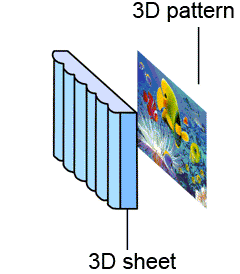
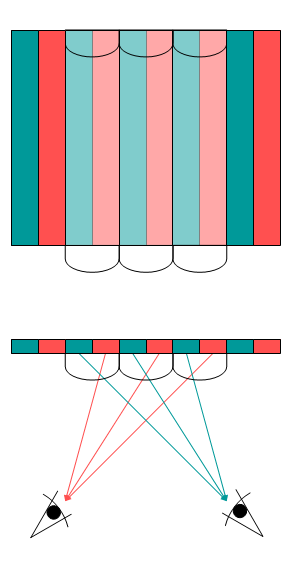
The trick is to provide a different image to each eye, just like the good old View Master. This creates depth and gives the impression of three dimensions. The View Master works with a stereo pair, but lenticular printing works with many stereo pairs thus allowing the viewer to perceive the depth effect from different points.

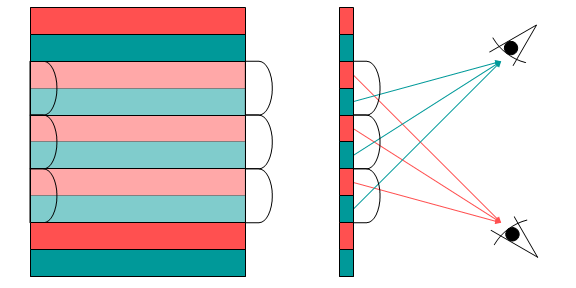
The Lenticular pictures move and show depth when the products are tilted.
3D Lenticular Card is a technology in which a lenticular lens is used to produce images with an illusion of depth, or the ability to change or move as the image is viewed from different angles.
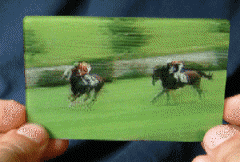
2.What Is Lenticular Printing?
When people try to describe "Lenticular Card Printing," you often hear them say "3D printing" or "3D Card".It's a powerful advertising tool. It's low-cost and highly effective. It uses Lenticular Lens plastic to create images with depth, motion, and the illusion of 3D.
3.What Is Lenticular LPI?
Lenticular Lenses Density - It is commonly expressed as LPI (Lens or Lines per Inch) refers to the number of lines installed per inch (2.54 cm) width.Common LPI are 75,100,120, 161. For example, 100 LPI means there are 100 Lenticular Lenses per inch. The image is clearer and more realistic. The thicker the material, and the 3D effect is better.
4.How Many Type of Lenticular Effect?
We can create 3D effects, flip effects, morph effects, animation effects, and Zoom effects.
5.Why Make Lenticular Card Products?
They attract the audience's attention! - Increased "viewership". - Everyone who receives your lens promotional product will show it to a friend, so you can reach a larger audience. - Higher ad retention rate.
6.What Materials Are Lenticular Products Made Of?
We always use PP and PET sheet material for lenticular Card. They are both plastic material. -Material PP, it's cheaper. It is widely use for flip lenticular products. -Material PET, it's more clearness than material PP, it is the best material for 3D lenticular Card products. And it's eco-friendly material.
Lenticular PS board is for big sizes Poster or Light box(Suitable for long-distance viewing between 2 and 3 meters).
Examples of Lenticular Card Printing include prizes given in Custome Cracker Jack snack Lenticular boxes that showed flip and animation effects such as winking eyes, and modern airport advertising graphics that change their message depending on the viewing angle. This technology was created in the 1940s but has evolved in recent years to show more motion and increased depth. Originally used mostly in novelty items, lenticular prints are now being used as a marketing tool to show products in motion. Recent advances in large-format presses have allowed for oversized lenses to be used in Offest Lenticular Printing and Digital Printing.
1.Different types of Effect With lenticular printing
Lenticular printing allows you to print many different lenticular effects. Depending on the number of images and the way they are interlaced, the result will have a different appearance. Most people are familiar with the typical flip animation. By changing the viewing angle you get to see two different images. However, there are many other applications, and below we give you a short explanation about the different possibilities.
Lenticular sheet materials make special lenticular effects, such as Flip, Moving(Animation),Zoom,Morphing , 3D , 3D+flip , 3D+Zoom etc.(See the picture below)
2.Flip effect images This is the simplest, but often the most effective form of lenticular printing. It consists of 2 or more images and can be produced for both horizontal (Up and down) effect and vertical (Side to side or left to right) effect applications. The viewing angle and the location of the person determine which image we get to see.
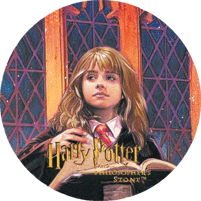
3.Moving/Animation effect images This is a variant of the flip. Moving or animation pictures have on average 10 or more images woven together. The background image is stable, but the moving parts are printed in different places. By varying the viewing angle, one gets the impression that the image is moving.
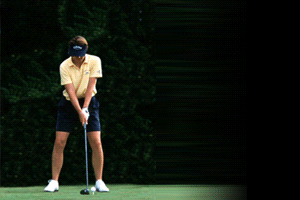
4.Zooming effect A real attention grabber is the zoom effect. When viewing the lenticular print from different angles, you get the impression that objects zoom in or out. In fact, the image is always the same, but it is interlaced in different sizes.

5.Morphing images With this type of animation you create a transition from one image to another. The morphing takes place in different stages, so one gets the illusion that one object is gradually transforming into a different object. Good preparation of the images is crucial for a good effect. Morphing software is easy to find on the web.
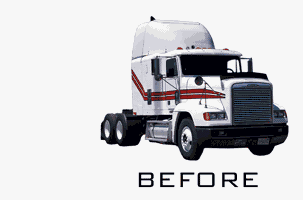
6.3D "depth" Stereoscopy effect images Three-dimensional simulations are very popular these days. By creating depth in the image, it takes the visual experience to a higher level. Lenticular printing is the only solution allowing to see 3D images without the help of special 3D glasses. Images with 3D simulations are more complex. However, simple 3D effects can easily be created in Adobe Photoshop. To add more depth, you can use special software tools like Autodesk 3D Studio Max or others like Maya, Lightwave 3D, Cinema 4D, etc… Another interesting application is the creation of 3D images from live scenery or people. This can be achieved by means of a camera mounted on a sliding bar. The displacement and the number of shots will depend on the type of picture and the resolution of the used material.
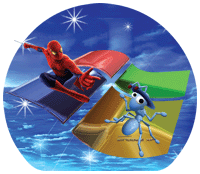
1.What Is The Maximum Size Of Lenticular Sheets That Can Be Produced?
Lenticular sheet Material : for Offset printing : 50 x 70cm in generally, Specific sizes : 60 x 80 cm . Thickness : 0.25~0.6mm
Lenticular PS board(For big sizes Poster or Light box) material : for Digital UV Printing :: 1.2 x 2.4m in generally, Specific sizes : 1.5 x 3m . Thickness : 2.8~20mm
Viewing Distance
All lenticular prints look best at a specific viewing distance. Lenticular image artwork intended for wall hangings is typically viewed from 6-9 feet away. Handheld lenticular printed cards are viewed from 1-3 feet away. The size of the print usually determines where this point is set and is factored into our calculations, but can be adjusted upon request.
2.What Are The Applications Of Lenticular Products?
3D Lenticular Postcard, Book Cover, Fridge Magnets,Flip Game Card, Bookmark, NoteBook, Sticker, RUler, KeyChains, 3D Picture Puzzle Card, Poster, Coaster, other advertising product and decorated artwork etc
3.What Format Of Design Files Are Required?
The format of PSD, AI, CDR,PDF, TIF,HD image is OK.
That depends on the type of document you're sending. A layered Adobe Photoshop (PSD) file is the preferred format. Layered PSD files should be saved with pixel based information only (no adjustment layers, all layers rasteried, etc. )and numbered with the lowest number at the top of the stack.
We also accept Adobe Illustrator (AI), Portable Document Format (PDF), HD JPEG, and TIFF formats. If artwork is submitted in vector format, all text must be converted to outlines. If you're providing a print-ready PDF, the PDF is the only file you'll need to send. However, if your document was created elsewhere (in a page layout program like InDesign, for example), you will need to include the page layout document, fonts, and any image files used in your design, as well.
If you want 3D effect, and the artwork don't with 3D layers, we can do 3D design with your artwork. It need design charge of 50 USD for per artwork.
4.Which Market Are Lenticular Card Products Mainly Exported(Or Supplied)To?
European market (France, Russia, Italy, Germany, Sweden, Spain, UK, Belgium, etc.), North American market, Middle East market, Australia and Oceania market.
5.How To Buy Lenticular Printing Products At A Cheaper Price?
The printing products include fixed cost(machine cost, labor cost,etc). So the quantity is bigger, the price is cheaper.
6.When Can I Get A Quote?
Usually we quote within 24 hours after we get your inquiry.
7.How do I place an order?
You can contact any of our sales person for an order.
Please provide the details of your requirements as clear as possible. So we can send you the offer at the first time.
For designing or further discussion, it is better to contact us with Email(sale@lxpack.com), Whatsapp(+8613728082121), Skype(lxpack), or other instant ways, in case of any delays.
8.What Is The Lead Time For Mass Production?
Honestly, it depends on the order quantity and the season you place the order. Always 7-15days.
Contact: Robin Sun
Phone: +86 13728082121
Tel: 0769-86061619
Email: Sale@lxpack.com
Add: 7/F, 49 XiaoBian St, Changan Town, Dongguan, GuangDong,523850 China